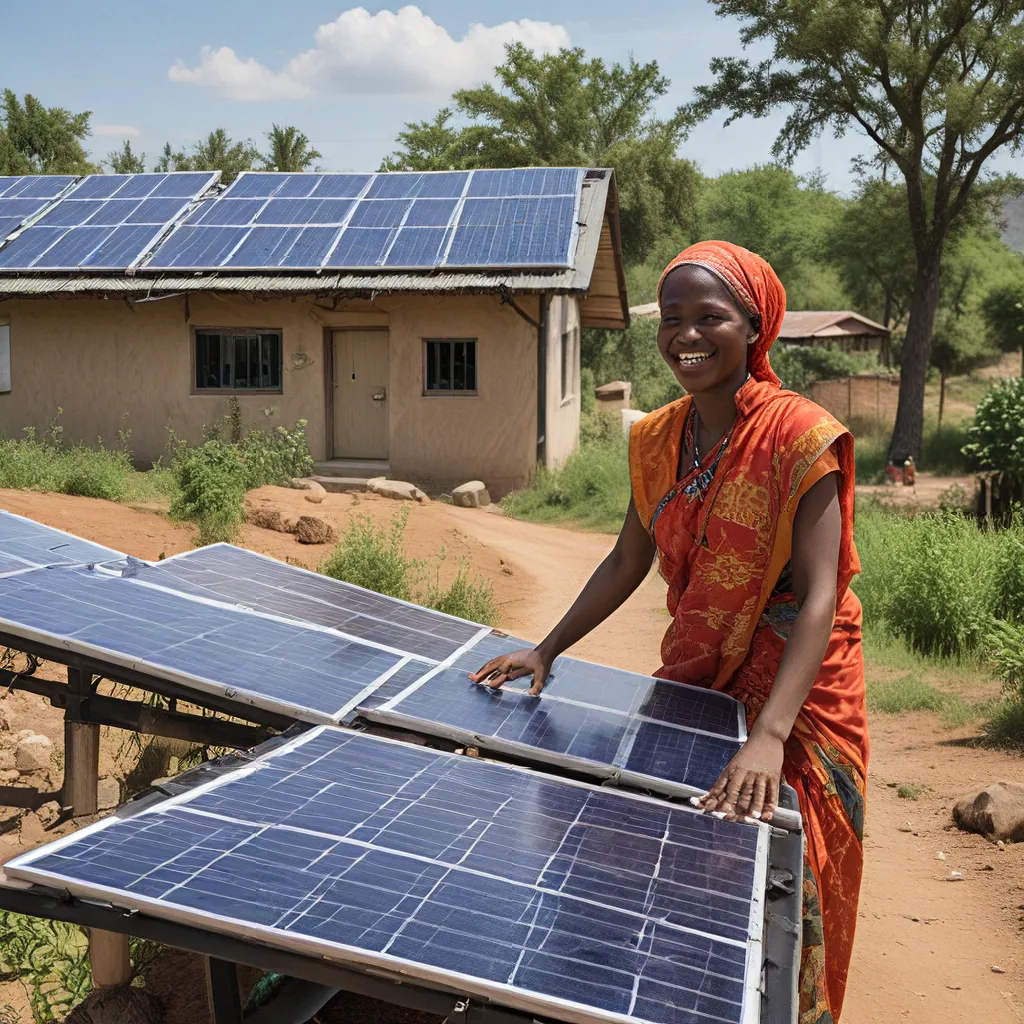
If you’ve ever found yourself in the middle of nowhere, with no electricity or cell service to keep you connected, then you know the feeling of being cut off from the world. It’s a reality that millions of people face every day, living in remote and underserved communities that lack access to the basic amenities we often take for granted. But what if I told you there’s a solution that’s not only empowering these communities, but also saving the planet in the process? Welcome to the world of solar-powered microgrids.
Harnessing the Sun’s Power
Imagine a small, self-contained electrical grid that’s powered entirely by the sun. That’s the essence of a solar-powered microgrid – a localized, distributed energy system that generates, stores, and distributes electricity to a specific area, often in places where the traditional power grid can’t reach. These microgrids are like little energy oases in the middle of the desert, transforming the lives of people who have been left in the dark for far too long.
Plug N’ Save Energy Products has been at the forefront of this revolution, working with communities around the world to harness the power of the sun and bring reliable, affordable electricity to those who need it most. And let me tell you, the impact of these solar-powered microgrids is nothing short of transformative.
Empowering Remote Communities
Imagine a village nestled deep in the Amazon rainforest, where the nearest power line is a day’s journey away. Or a small, isolated community in the mountains of Nepal, where the only source of light after sunset is the flickering flame of a kerosene lamp. These are the kinds of places where solar-powered microgrids are making all the difference.
Take the example of Boca do Acre, a remote area in the Brazilian Amazon. Here, a 11 MW microgrid developed by Enel Green Power is using solar energy and battery storage to provide reliable electricity to the local community. No longer do they have to rely on expensive and polluting diesel generators to power their homes and businesses. Instead, they have access to clean, renewable energy that’s tailored to their specific needs.
And it’s not just in Brazil – microgrids are popping up all over the world, from the 15 MW microgrid in Pali, Rajasthan, India, to the 10 kW microgrid in Madison County, North Carolina, USA. These localized energy systems are empowering remote communities, creating job opportunities, and transforming the way people live and work.
Overcoming the Challenges of Grid Connectivity
For many remote and underserved communities, the traditional power grid is simply out of reach. The cost of extending transmission lines and infrastructure to these far-flung locations is often prohibitively high, leaving millions without access to reliable electricity. But solar-powered microgrids are changing the game.
These self-contained energy systems are designed to operate independently, “islanding” from the main grid when necessary. This means that even if the larger power network goes down, the microgrid can continue to provide uninterrupted electricity to the local community. It’s a game-changer for places that are prone to natural disasters or extreme weather events, where the central grid can be vulnerable to outages and long restoration times.
Embracing Renewable Energy
But the benefits of solar-powered microgrids go beyond just reliable electricity. These systems are also playing a crucial role in the transition to renewable energy, helping to reduce the reliance on fossil fuels and combat climate change.
In remote areas where access to the grid is limited, microgrids are able to support the development of small- and medium-sized renewable energy sources, such as solar, wind, hydroelectric, and even biogas. This not only provides clean, sustainable power to the local community, but also creates new opportunities for economic development and job creation.
Take the example of Husk Power Systems (HPS), a company that has developed over 100 microgrid projects in the state of Bihar, India. These microgrids use rice husks as the primary energy source, empowering local communities while reducing their dependence on polluting fossil fuels. It’s a win-win scenario that’s being replicated across the globe.
Fostering Community Resilience
But solar-powered microgrids are about more than just electricity – they’re about building resilient, self-sufficient communities. By providing a reliable, localized source of power, these systems are helping to cultivate a sense of autonomy and self-reliance among the people they serve.
In the face of natural disasters or extreme weather events, microgrids can act as a lifeline, maintaining critical infrastructure and keeping essential services running. This is particularly important for remote communities, where the central grid may be slow to respond or unable to reach.
Just imagine the relief felt by the Indiana National Guard when their 14 MW microgrid, complete with solar power, battery storage, and a backup generator, kept their training facility running smoothly during a power outage. Or the peace of mind for the residents of Migori, Kenya, who now have access to sustainable electricity thanks to the microgrid developed by Nuru, a company dedicated to empowering off-grid communities.
A Brighter Future for All
As the world grapples with the challenges of climate change and the urgent need for clean energy solutions, solar-powered microgrids are emerging as a shining beacon of hope. These localized, resilient energy systems are not only transforming the lives of remote and underserved communities, but also paving the way for a more sustainable, equitable future.
At Plug N’ Save Energy Products, we believe that access to reliable, affordable electricity is a fundamental human right. That’s why we’re proud to be a part of this solar-powered revolution, working alongside communities around the world to harness the power of the sun and create a brighter tomorrow.
So, the next time you flip a switch and the lights come on, take a moment to appreciate the incredible technology that’s making it possible – and the dedicated individuals and organizations who are using it to empower the most vulnerable among us. Because when it comes to the future of our planet, every watt of clean, renewable energy matters.